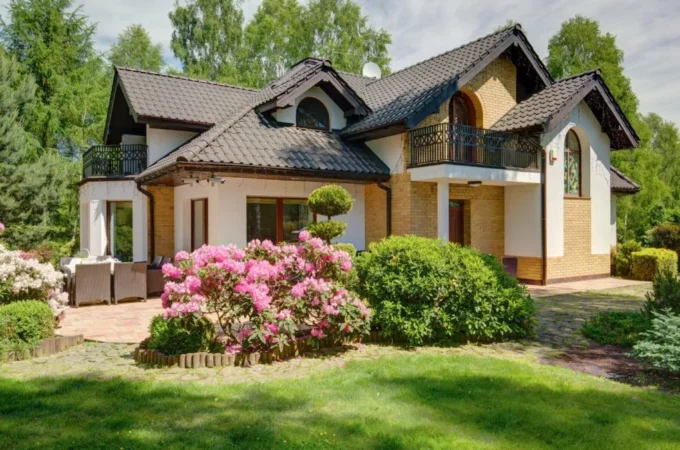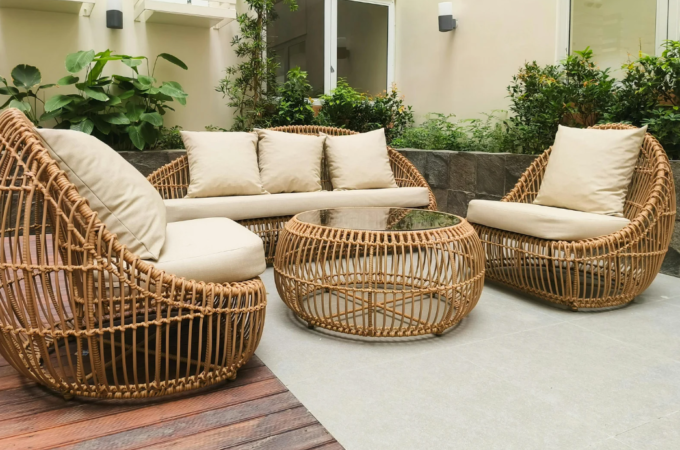
How to Make Your Home Safer Without Turning It into a Fortress
There’s a difference between living safely and living in fear. It’s true that some people take it too far with home security, cameras in every corner of the house, motion sensors that ping your phone at 2 AM because a raccoon walked by, and enough locks that a locksmith would be proud. Yet safety is not turning your home into a maximum-security prison, but rather, understanding how things really happen and calmly and adequately applying your own measures to ensure safety without a feel that your home is preparing for war.
Table of Contents
ToggleStart with the Obvious: Make it Difficult to Be Approached Unnoticed
Most home invasions are not elaborate, nor planned out. They’re passive decisions made in the moment by someone who sees an easy opportunity. This means that visibility, yours and theirs, is your best ally. Motion sensor lights that illuminate entryways and walkways are worth every penny; you want to encourage anyone who might be up to no good to always be in the light. Trim bushes and trees that are near doors and windows to dissuade anyone from an easy hiding place.
Note: Not trimming down bushes to look barren is not the goal, just removing the easy cover. A few changes in landscaping can quietly transform your yard into one in which someone looking for trouble will look instead at your neighbor’s. It’s barely an intrusion.
Secure What’s There Before Adding Anything Else
People go out and buy fancy security systems before they check if their door frames can withstand a kicking. A fancy deadbolt only works as well as the door it’s attached to. Reinforcing strike plates with 3-inch screws and metal strike plates is a minor change that makes a large difference.
Windows are often where culprits come through more than anything else. Locks count but habits do as well. Many burglaries occur through unlocked side windows because someone just forgot. You need to build a habit of locking everything, even during the day, as it takes little time once people get into the habit of doing it.
And check your garage door situation. It’s the most common area in which homes are weak. Newer systems are great but sometimes they come with vulnerabilities. Adding a manual lock for when you’re home, maybe even away for longer periods of time, is good practical prevention.
Be Smart About What People Can See
Many people unintentionally signal what’s inside their homes without meaning to. Windows open wide, boxes of expensive electronics put out on trash night for collection, even garage doors open too long, they’re all little things that pique curiosity.
You’re not trying to hide your life, just control the visibility. Curtains on interior doors to let light in but not view in, frosted glass panels on doors, tinted film on street-side windows can all allow privacy without the appearance of being closed off to the outside world.
Implement Layers Instead of One “Big Fix”
There is rarely one piece of equipment or a solution that will keep a home safe. Protection comes from layers, small things that add up as an intrusion takes place and slow down anyone who shouldn’t be there.
An alarm system works better in conjunction with barriers, lighting, good visibility from other houses and existing animals. A dog that responds to strange movement adds another layer. Even noise, like a radio on a timer turned on by a window, can dissuade someone based on being noticed.
Every layer buys you time and attention, two things you need when someone shouldn’t be somewhere they’re not supposed to be. The longer it takes someone to get in (and subsequently make noise), the more attention they get drawn into which generally makes them skedaddle.
Responsible Defense Options
You can’t talk about home safety without discussing personal defense options; however, it’s one of those things where either people brush over it altogether or jump right in without thinking about it first. The truth lies somewhere in between, it’s preparation, not paranoia.
Take firearms for example: they’re an intensely personal choice. Some people do not need them or want them, but for those who do, training with firearms is far better than what brand they have or even the caliber size. Smaller firearms like 410 shotguns have gained popularity because they have manageable recoil and reduce the chance of missing shots when containment becomes critical with smaller rooms within homes. The emphasis needs to be placed on knowing where it is, keeping it stored properly and safety training, as well as practiced use.
If firearms are not part of your comfort zone, that’s fine too; there are plenty of alternatives, non-lethal engagement methods like pepper spray, alarms that get triggered exceptionally loud or locks designed to lock down instantly. The point is that whatever option exists should make someone feel comfortable using it under pressure.
Don’t Forget About Those Inside
Many people forget about the coordination that comes inside the home with safety. The locks, lights and alarms are all great, but if no one inside knows what to do if something seems amiss, that’s just as dangerous. Everyone needs to know the procedures needed to keep themselves safe, where to go if noise comes from outside or how to help when help isn’t on the way until it’s on the way.
It doesn’t need to be a formal “drill.” Even a quick conversation at dinner with everyone pitching in about what to do if something happens can go a long way. Panic usually comes from confusion; not knowing what should happen makes everyone vulnerable, and anything that reduces confusion creates immediate safety.
In addition, children need clear instructions, how best to contact someone if they’re alone, where is safe if an alarm goes off (the safest place is with whoever is responsible) and they should never go looking for what created the noise.
Technology Helps but It’s Not Magic
Smart home devices can help, but they’re no cure-all. Cameras, motion sensors and applications connected via Wi-Fi may give peace of mind but they’re only as good as how they’re incorporated.
For example, cameras that notify for every passing car (trust me, I live on that street) teach everyone to ignore notifications.
Keep tech simple. Cover entry points with cameras, light timers and alerts that matter (but don’t constantly drone on all day). And never forget, if something is solely Wi-Fi based it’s also solely powered by electricity; having something truly mechanical helps when Wi-Fi goes down and surely keeps your plan intact.
Make It a Routine, Not A Project
Home safety isn’t something you just do once and you’re golden. Locks break or loosen, batteries run out, habits lag. It becomes more important to check every few months than get new equipment all the time.
Walk around your house every once in a while at night. How does it look from an outsider’s perspective? Is anything easily gained? That awareness picks up on issues long before they become problematic.
And remember, you’re not going for a fortress. For some it’s all psychological, you’d want your home to feel safe because it is safe, a comfort that should allow peace of mind without fear, but such action only comes if it’s practical in accordance with your life.
Summary
Making your home safer does not mean barricading yourself inside. Instead it’s through educated assumptions, good locks, lighting, habits, plans everyone knows how to navigate, that make access more complicated which ultimately creates safety.
There’s a quietness to personal protection most people forget. The more you shout about it or make it complicated, the less it’s feasible, and truly saves peace of mind for everyone involved.
When completed seamlessly, home safety feels like it’s naturally part of life (sometimes due to external force) so that when trouble should come knocking, it barely feels like anything new but rather just part of existence and life.


